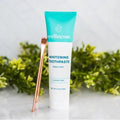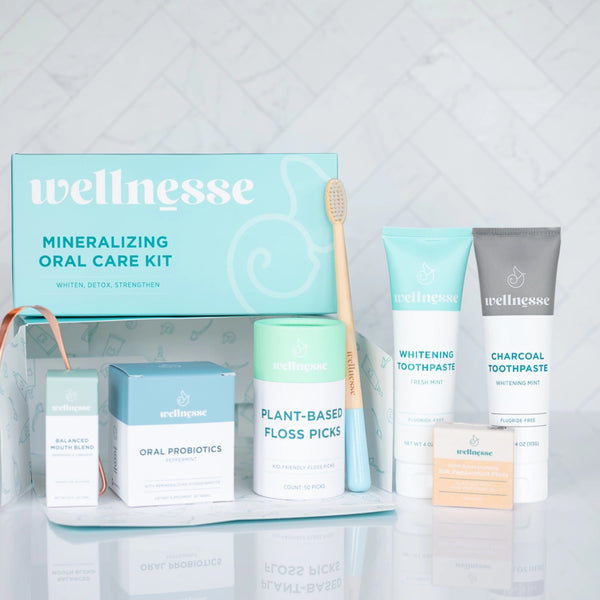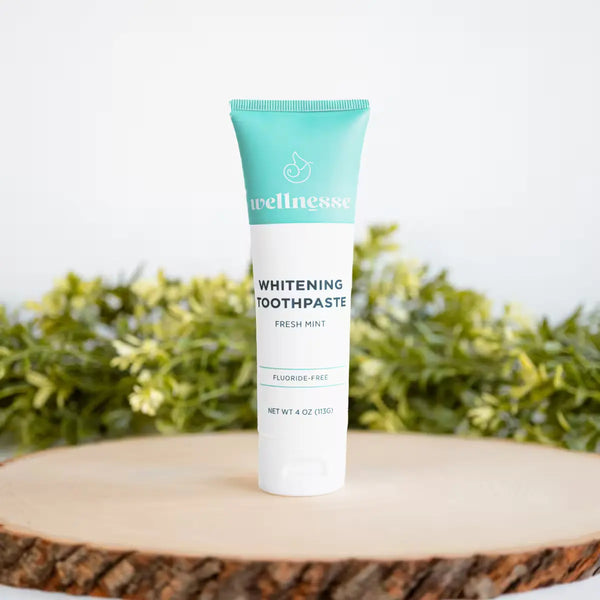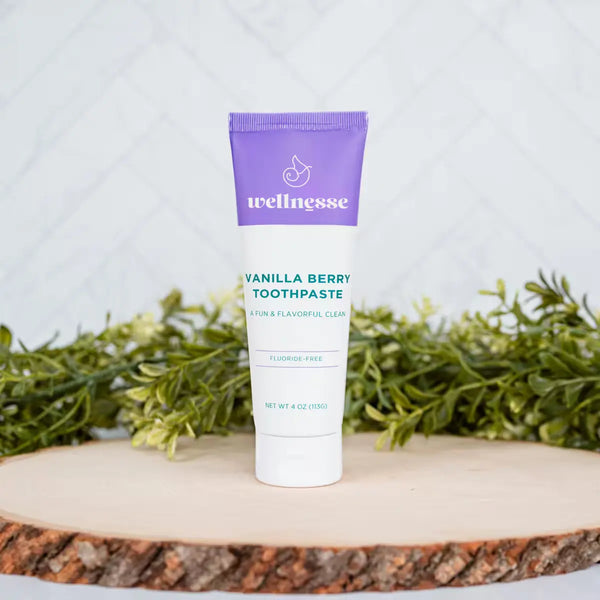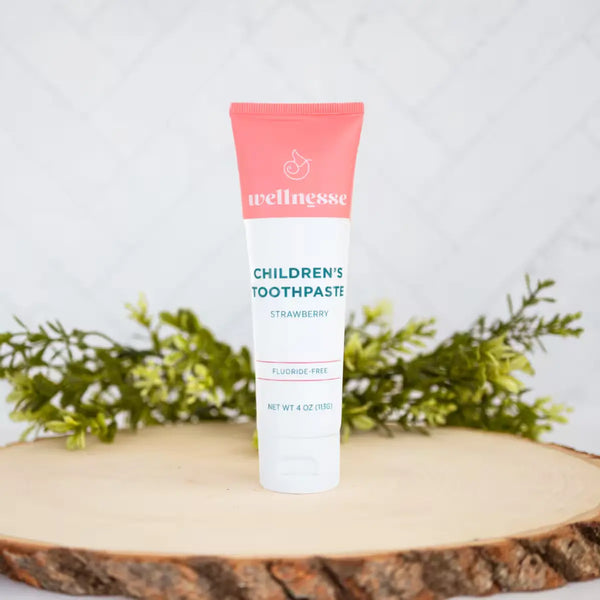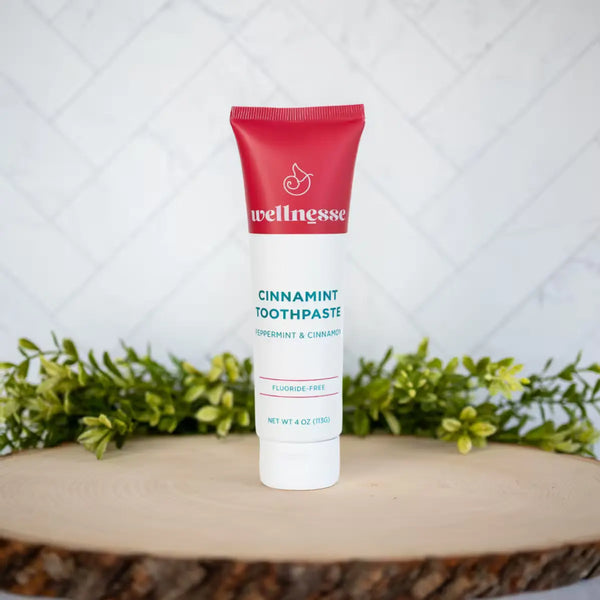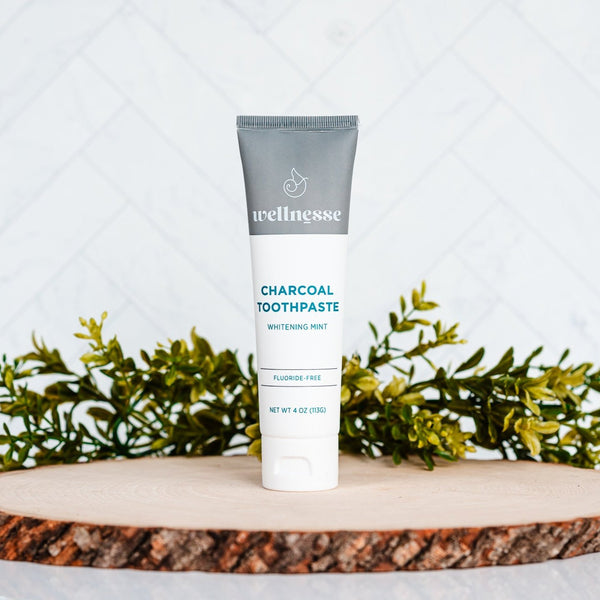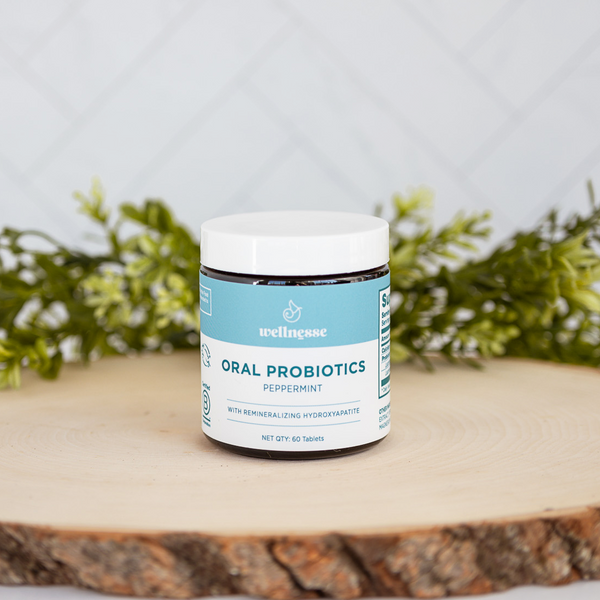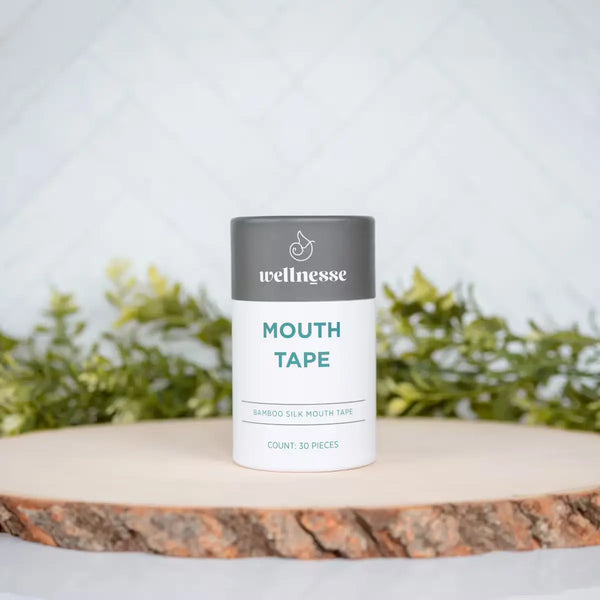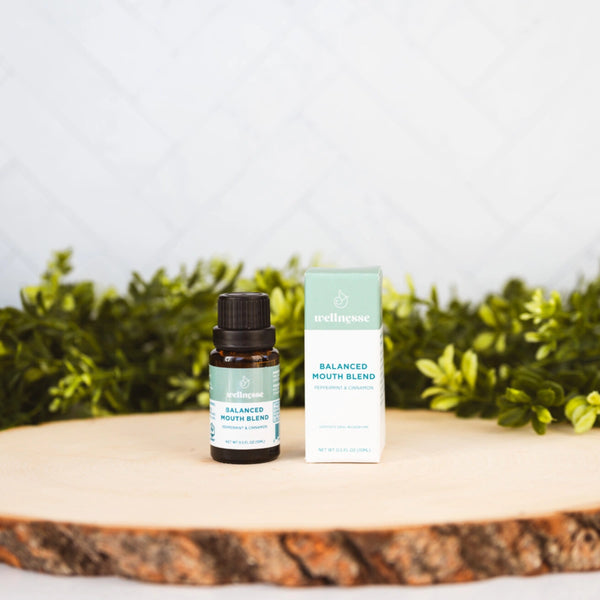Keeping your tooth enamel strong is essential for a healthy smile. Enamel is the hard outer layer of your teeth that shields them from decay and sensitivity. However, once enamel is worn away, the body can’t grow it back. The good news is that you can protect and strengthen the enamel you still have. A promising approach is to add a mineral-based toothpaste to your daily oral care routine. Such toothpastes are formulated to remineralize teeth – essentially providing your enamel with the minerals it needs to repair early weakness. In this article, we’ll explain what enamel is, why it erodes, and how using modern mineral toothpastes can offer natural enamel repair.

What Is Tooth Enamel and Why Does It Need Protection?
Tooth enamel is the hardest substance in the human body, consisting of about 96% mineral and only a small amount of water and proteins. This dense mineral composition is what makes enamel extremely tough – it protects the softer dentin and nerve-filled pulp inside your tooth from acids, bacteria, and physical wear. Enamel’s strength lets you chew and bite comfortably, and it also insulates teeth from hot and cold temperatures. Despite its hardness, enamel has one big weakness: it is not a living tissue and cannot regenerate itself once damaged. The cells that formed your enamel during childhood are lost after your teeth erupt, so any enamel that wears away is gone forever. In practical terms, a crack or cavity in enamel won’t “heal” on its own.
However, weakened enamel can be strengthened through remineralization. Enamel is in a constant battle between demineralization and remineralization. Demineralization happens when acids remove minerals from the enamel, making it softer and more prone to decay. Remineralization is the opposite – it’s when minerals from your saliva or oral care products re-deposit into the enamel surface, hardening it again. Early-stage enamel erosion can often be halted or reversed by adding minerals back to the tooth. This is why using a toothpaste for enamel or mouthrinse can be so beneficial.
Common Causes of Enamel Erosion
Life exposes your teeth to many enamel-damaging factors. Enamel erosion refers to the wearing down or loss of that protective outer layer, often due to acids or abrasion. Enamel loss can result from a variety of sources:
-
Frequent Exposure to Acids: The regular consumption of highly acidic foods and beverages is a primary culprit. Items such as citrus fruits (lemons, oranges, grapefruits), carbonated sodas, many sports drinks, wine, and even vinegar-based dressings possess a low pH that can gradually demineralize and soften the enamel surface. Over time, this constant acidic assault erodes the enamel, making teeth more vulnerable to damage.
-
High Sugar or Starch Diets: Beyond direct acid exposure, diets rich in refined sugars and starches create an acidic environment indirectly. Oral bacteria feed on these carbohydrates and, as a metabolic byproduct, produce acids. This bacterially generated acid significantly accelerates enamel demineralization, leading to the formation of cavities (dental caries). The more frequently teeth are exposed to these fermentable carbohydrates, the higher the risk of acid production and subsequent enamel damage.
-
Poor Oral Hygiene (Plaque Buildup): Inadequate brushing and flossing allow plaque, a sticky, colorless film composed of bacteria, food particles, and saliva, to accumulate on tooth surfaces. Within this plaque, bacteria thrive and continue to produce acids from any sugars present in the mouth. Without consistent and effective oral hygiene practices, this persistent acid attack from plaque bacteria continuously erodes enamel, creating an ongoing demineralization process.
-
Mechanical Wear and Tear: Physical forces can also degrade enamel. This includes habits such as aggressive toothbrushing, especially with abrasive toothpastes or hard-bristled brushes, which can physically abrade the enamel surface. Furthermore, bruxism (teeth grinding or clenching), often occurring subconsciously during sleep or periods of stress, exerts tremendous force on the teeth. This friction and stress over prolonged periods cause microscopic enamel loss, thinning the protective layer.
-
Low Saliva or Dry Mouth (Xerostomia): Saliva plays a crucial role as a natural defense mechanism. It helps neutralize acids in the mouth, washes away food debris, and bathes teeth in essential minerals (like calcium and phosphate) that can help remineralize weakened enamel. Conditions that lead to dry mouth, such as certain medications (e.g., antihistamines, antidepressants), autoimmune diseases like Sjögren’s syndrome, or chronic dehydration, significantly reduce saliva flow. With less saliva to buffer acids and provide mineral support, teeth become far more susceptible to enamel erosion.
-
Acid Reflux and Vomiting: Gastroesophageal reflux disease (GERD), commonly known as acid reflux, or frequent vomiting (as seen in conditions like bulimia nervosa), exposes teeth to potent stomach acids. These strong acids, which are much more corrosive than dietary acids, are brought up into the mouth and can cause rapid and severe erosion, particularly on the lingual (tongue) surfaces of the teeth.
-
Genetics and Age: Individual genetic predispositions can influence enamel strength and salivary flow, making some individuals naturally more prone to erosion. For instance, some people may inherit thinner or less mineralized enamel. Additionally, enamel naturally thins and becomes more susceptible to wear as part of the aging process, a result of decades of normal use and exposure to various environmental factors.
All these factors highlight why it’s so important to proactively protect your enamel. When enamel thins, you may notice signs like tooth sensitivity, yellowing, or an increased rate of cavities. The key to prevention is minimizing acid attacks and abrasion while supporting demineralization.
Dietary Recommendations for Enamel Health
Some of the best foods for enamel health are those rich in calcium and phosphorus, two minerals that are essential for remineralization. Dairy products, such as milk, cheese, and yogurt, are excellent sources of calcium, which helps replenish minerals on the enamel surface and makes teeth more resistant to decay. Leafy greens such as spinach, kale, and collard greens are also packed with calcium, plus they contain other nutrients that support oral health. Nuts, especially almonds, are another good choice; they provide both calcium and protein while being low in sugar. Phosphorus, found in foods like eggs, fish, and lean meats, works alongside calcium to rebuild and reinforce enamel. Water is perhaps the simplest and most effective beverage for enamel protection. It rinses away food particles and acids, helps maintain a healthy pH in the mouth, and stimulates saliva production—your body’s natural defense against acid attacks. Drinking water throughout the day, especially after meals or snacks, can help neutralize acids and wash away residues that might otherwise contribute to enamel erosion. If you’re looking for a tooth-friendly snack, consider cheese, which not only provides calcium but also helps balance the mouth’s pH and stimulates saliva. Crunchy vegetables like carrots and celery are also beneficial; their texture encourages chewing, which increases saliva flow and helps clean the teeth.
To minimize dietary harm, it’s wise to be strategic about how and when you consume acidic or sugary foods and drinks. Enjoying these items as part of a larger meal, rather than alone or as frequent snacks, can reduce their impact on enamel because other foods and increased saliva help neutralize acids. If you do indulge in acidic foods, pairing them with neutralizing foods like cheese or drinking a glass of milk afterward can help buffer their effects. Using a straw for acidic beverages like fruit juice or soda can also limit direct contact with your teeth. After consuming acidic foods or drinks, rinse your mouth with water and wait at least 30 minutes before brushing to avoid damaging softened enamel. For those who crave sweets, opt for fresh fruit or sugar-free gum instead of sticky candies or baked goods.
Mineral-Based Toothpastes: A New Way to Strengthen Enamel
An exciting development in oral care is the rise of mineral-based or enamel-strengthening toothpaste that goes beyond fluoride. The star ingredient in most of these products is hydroxyapatite, which is a form of calcium phosphate that is the same mineral your enamel is made of. Hydroxyapatite is the main inorganic component of enamel. Hydroxyapatite toothpastes contain microscopic particles of this mineral that can bind to the tooth surface and fill in tiny cracks or weak spots. Essentially, they “patch” the enamel with the very substance it’s made from. Research has shown that these HAp particles can deposit onto and restore demineralized enamel surfaces. A hydroxyapatite toothpaste can actively replenish lost minerals in a damaged enamel area, reinforcing the structure. This mechanism is akin to adding new bricks into a wall where some bricks were missing. Over time, regular brushing with hydroxyapatite could make your enamel harder and smoother by continuously repairing micro-lesions. This approach offers a form of natural enamel repair by using a biomimetic ingredient – you’re fixing the tooth with the same mineral the body naturally uses.
Hydroxyapatite as a toothpaste ingredient was first developed decades ago but has recently surged in popularity worldwide. Interestingly, the idea originated from NASA-funded research in the 1970s, aimed at preventing astronauts’ teeth and bones from demineralizing in zero-gravity. That research led to the invention of the first hydroxyapatite toothpaste in Japan. The very first hydroxyapatite-based remineralizing toothpastes were introduced in Japan in the 1980s. Japan was an early adopter because, historically, it had not fluoridated its water, making the discovery of an alternative anti-cavity agent attractive. The concept only more recently caught on in North America, in part because U.S. regulations were slow to recognize hydroxyapatite as an official anti-caries ingredient. But attitudes are changing as studies accumulate in favor of hydroxyapatite’s efficacy.

Aside from hydroxyapatite, other minerals and compounds in remineralization toothpaste can help strengthen enamel. Some products use calcium phosphates (like TCP – tricalcium phosphate or CPP-ACP – casein phosphopeptide amorphous calcium phosphate), which release calcium and phosphate ions to aid remineralization. Others use bioactive glass (Novamin) that also releases minerals. These can be found in certain sensitivity toothpastes or specialty pastes. The unifying idea is delivering calcium and phosphate to the tooth in a form that can integrate into weakened enamel.
What’s the advantage of a hydroxyapatite or mineral toothpaste? For one, it’s a fluoride-free option for those who want to avoid fluoride but still protect their teeth. It’s also safe to swallow, since hydroxyapatite is non-toxic – it’s the same substance as bone, after all. This makes HAp toothpaste especially appealing for young children or anyone who might be sensitive to fluoride. Another benefit reported by users and researchers is reduced tooth sensitivity. Because hydroxyapatite can seal up the tiny tubules in exposed dentin (the cause of sensitivity), it often provides relief comparable to or better than traditional sensitive toothpastes. One study found that a hydroxyapatite toothpaste to strengthen teeth was significantly better at rebuilding enamel and relieving sensitivity than a high-fluoride toothpaste.
Another advantage is that mineral toothpastes tend to be gentler and more biocompatible. They do not require the presence of harsh detergents or intense flavors to be effective. People who experience irritation from conventional toothpaste detergents often find relief switching to a more natural formula. And because hydroxyapatite is white, it can even improve tooth whiteness and gloss by filling in rough enamel surfaces, making them smoother and shinier. The polishing effect can make your teeth appear brighter without actual bleaching.
Integrating Mineral Toothpaste into Your Daily Routine
Adding a mineral toothpaste to your oral care routine is straightforward, but there are a few tips to maximize its effectiveness. Remember, even the most advanced toothpaste can’t protect your enamel alone – it works in tandem with proper hygiene habits and diet choices. Here are some strategies for integrating an enamel-remineralizing toothpaste into your daily life:
-
Brush thoroughly twice a day: Use your mineral toothpaste in the morning and at night, just as you would any regular paste. Consistency is key. Squeeze a pea-sized amount and brush for a full two minutes, covering all tooth surfaces. Regular use ensures a continuous supply of minerals to your enamel.
-
Use proper brushing technique: Be gentle on your enamel. Dentists advise brushing with a soft-bristled toothbrush and light pressure to avoid scrubbing away enamel. Brush in gentle circles or short strokes at a 45° angle to the gumline. Aggressive brushing can wear down enamel over time, so let the toothpaste do the work – no need to press hard.
-
Don’t rinse out immediately: After brushing, spit out the excess but avoid vigorously rinsing with water. Leaving a slight residue of the hydroxyapatite toothpaste on your teeth can allow more time for the minerals to absorb. Some people even just spit without rinsing at night, to let the paste’s ingredients linger and continue strengthening enamel as you sleep.
-
Incorporate flossing and gum care: A mineral toothpaste might be the star for enamel, but you should still floss daily and care for your gums. Strong enamel and healthy gums go hand in hand for overall oral health. Floss once a day to remove plaque between teeth – this prevents hidden plaque acids from eroding enamel in those tight spots. You can also consider a gum repair toothpaste or mouthwash with ingredients like xylitol or aloe if your gums need extra attention. Many remineralizing toothpastes naturally benefit gums too by reducing plaque.
-
Watch your diet and timing: To give your toothpaste a fighting chance, try to reduce very acidic foods and drinks in your diet (or consume them in one sitting rather than grazing all day). If you do have something acidic, rinse your mouth with water afterward and wait at least 30 minutes before brushing (brushing immediately on softened enamel can do more harm than good). Chewing sugar-free gum after meals can also stimulate saliva to help neutralize acids. Essentially, continue to practice enamel-friendly eating – your toothpaste will then have less damage to repair.
-
Be patient and observant: Don’t expect overnight miracles. Give the new toothpaste a few weeks to a few months to remineralize subtle lesions and reduce sensitivity. You might notice your teeth feel smoother or less sensitive over time. At your regular dental checkups, ask your dentist if they observe any changes in your enamel density or new cavities (hopefully none!). This feedback can confirm that your routine is working.
Continue to maintain your regular dental visits – professional cleanings and exams complement your at-home efforts. Your dentist can also apply concentrated remineralization treatments if needed, and they’ll be thrilled if you’re taking enamel protection seriously at home.
Choosing the Best Mineral Toothpaste and Where to Find It
If you’re ready to try an enamel-remineralizing toothpaste, how do you pick the right one? The “best” choice can vary based on your needs, but here are some considerations. Look at the active ingredients list. The best mineral toothpaste options will contain a known remineralizing agent. Nano-hydroxyapatite is a top-tier ingredient to look for – often listed as hydroxyapatite or n-HAp with a percentage (like 5% or 10%). Some toothpastes use calcium phosphates (like TCP or ACP), which are also beneficial, though hydroxyapatite has the closest composition to real enamel.
Pay attention to other qualities: Is the toothpaste abrasive or gentle? Many whitening toothpastes are quite abrasive, which can counteract remineralization by scrubbing enamel away. A good remineralizing toothpaste is usually low-abrasion (often using soft polishing agents like silica or none at all). Check for the Relative Dentin Abrasivity (RDA) if provided; a lower number (under ~70) is gentler on enamel. Also, consider flavor and texture. Some enamel restoring toothpaste products with hydroxyapatite can taste a bit different – people describe HAp pastes as having a mildly chalky texture compared to conventional pastes, because of the mineral content. If minty freshness is important to you, read reviews to find one that scores well on taste. There are even fruity flavors for kids.
When it comes to actually purchasing, you can easily buy remineralizing toothpaste online. Many of these specialized toothpastes are sold primarily through online retailers or the manufacturers’ websites. You may not find every brand at your local drugstore, but a quick search will yield many options. It’s wise to read some customer reviews and even check if any clinical studies support the brand’s claims. Many manufacturers will mention tests or dentist endorsements if they have them.
For convenience, you can shop mineral toothpaste online directly from trusted companies. Wellnesse offers a mineral-based hydroxyapatite toothpaste that allows customers to rebuild enamel naturally without using fluoride. Many of these products are available on their official websites or on large online marketplaces. When shopping online, ensure you’re buying from the official store or an authorized seller to guarantee authenticity. If you prefer brick-and-mortar, some health stores or dentists’ offices carry remineralizing pastes, so ask your dentist if they have recommendations or samples.

Consistently using a proven toothpaste for strengthening enamel, along with a smart diet and good oral hygiene habits, will help safeguard your smile for years to come. You have choices today: fluoride has decades of success behind it, and now mineral-based toothpastes offer a cutting-edge, natural route to strong enamel. Either way, committing to enamel protection means fewer cavities, less sensitivity, and more confidence in your healthy teeth. With the right strategies in your daily routine, you can maintain a resilient layer of enamel that will protect your teeth through all the meals, snacks, and smiles of life.
Sources
-
Corey Whelan. “How to Find the Right Remineralizing Toothpaste.” Healthline, June 21, 2022 healthline.com.
-
Jayasudha et al. “Enamel Regeneration – Current Progress and Challenges.” J Clin Diagn Res, 2014 pmc.ncbi.nlm.nih.gov.
-
“What Tooth Enamel Is, Function & Care.” Cleveland Clinic, reviewed Mar. 6, 2023 my.clevelandclinic.org.
-
Mark Alon. “Top Foods That Help Remineralize Teeth and Strengthen Enamel.” Garrisonville Dental Blog, Apr. 9, 2025 garrisonvilledental.com.
-
Mark Alon. “Protect Your Smile: Top Tips for Enamel Care.” Garrisonville Dental Blog, Aug. 27, 2024 garrisonvilledental.com.
-
Kelsey O’Hagan-Wong et al. “The use of hydroxyapatite toothpaste to prevent dental caries.” Odontology 110, 2022 pmc.ncbi.nlm.nih.gov.
-
Steven Lee. “Study shows toothpaste with ‘artificial enamel’ ingredient restores enamel, is more effective than fluoride.” UT Health San Antonio News, May 30, 2023 news.uthscsa.edu.
-
Metropolitan Dental Arts (Brooklyn, NY). “Unpacking the Potential Negatives of Hydroxyapatite Toothpaste,” Feb. 26, 2025 metropolitandentalarts.com.
-
NASA Spinoff. “Semiconductor Research Leads to a Revolution in Dental Care,” 2020 spinoff.nasa.gov.
